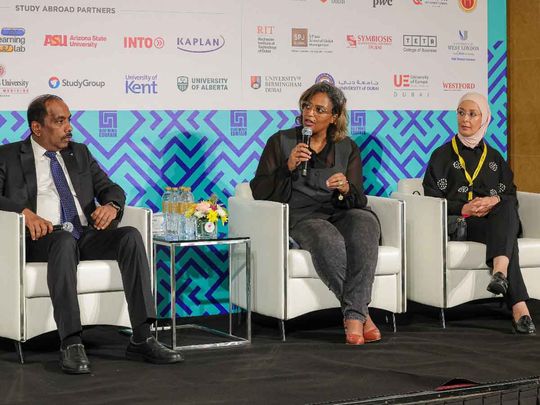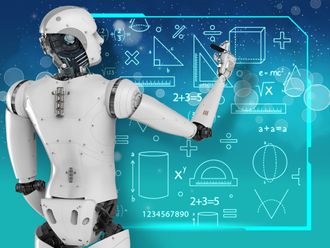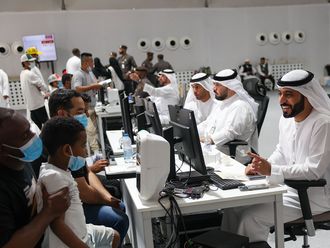
Technology integration is no longer an option in higher education; it has become a necessity for institutions looking to meet the demands of a rapidly changing world. At a recent panel discussion titled, From talk to action: Higher Education takes a digital leap, experts from universities in the UAE emphasised that leveraging technology is critical for enhancing every facet of education delivery, whether in lectures, research, or student support, ensuring that educational practices remain relevant and effective.
“Transforming universities through digital means involves three key aspects. First, we need to digitalise processes to improve efficiency and effectiveness, just like in any industry,” said Dr Sudhindra Shamanna, Academic President, Manipal Academy of Higher Education, Dubai.
“We must transform pedagogical practices – the way we teach, how students learn, and how we evaluate them and it’s also essential to integrate technology into the curriculum. These three aspects are crucial; without them, universities cannot move forward,” he said.
Dahlia Mahmoud, a professor at University of Europe for Applied Sciences in Dubai, highlighted the importance of academics keeping up with industry trends. She stated that this alignment is essential for enriching classroom learning and providing students with valuable skills for their future.
“In the culture and creative industries, for instance, we continuously monitor current productions, tools, and technologies. We make these resources available in our university in an interdisciplinary manner,” she said.
“Similarly, students of business studies can learn branding by accessing both free and paid AI platforms. It is critical for educators to teach students how to use these tools effectively, ensuring they remain up-to-date with industry practices,” Mahmoud.
Best ways to integrate technology in education
Saida Harguem, Associate Professor and Programme Coordinator for the BBA in e-Business and Master of Information Technology Management at Canadian University Dubai, pointed out that digital transformation should not be seen merely as a transition to online courses. She discussed the necessity of integrating technology across all aspects of learning to enhance teaching methods and student engagement.
“We can embed digital tools like simulations and interactive platforms into our courses, as we do at our university. Partnerships with online educational platforms like Coursera also help expand our offerings,” she said.
It's essential to recognise that digital transformation involves collaboration and research opportunities. “Today, advanced research often relies on AI, data science, and cloud computing. These technologies enhance research capabilities and foster global collaboration among researchers,” Harguem said, adding, “We should cultivate partnerships with industry to prepare students for a job market that demands new, technology-based skills. By incorporating real-world projects through industry collaboration, we can ensure our students are ready for future challenges.”
Shamanna asserted that for seamless technology integration, universities must recognise that it should extend across all disciplines. He noted that tech integration should not be limited to science subjects but rather embraced in fields like humanities and social sciences to prepare students for a comprehensive learning experience.
“We often think of technology as limited to fields like engineering or management. However, technology is present in every discipline, including the humanities, design, and media and communication. It plays a significant role across all areas. We must adopt technology in every field, as no area is immune to its influence,” he explained.
Educators acknowledged that overhauling legacy education systems is sometimes a complex challenge, often requiring significant planning, strategic thinking, and a cultural shift to fully embrace digitalisation.
“Business models for new technologies are not always perfect. For instance, we tried adopting e-pads for students last year, but we encountered challenges. The return on investment (ROI) has been difficult to justify because the technology is not fully developed and vendors are scarce,” said Shamanna
“Additionally, once we decide to adopt a new technology, the implementation process is crucial. It cannot be a bottom-up or top-down approach; we need to establish a task force and operate in mission mode. This requires clear deliverables and timelines. Without this structured approach, we will continue to face significant challenges,” he explains.
Teach students when to use AI and when not to
While AI and VR are transforming the learning experience, they also raise important concerns about plagiarism and overdependence. Educators believe that finding the right balance is crucial to effectively harnessing the benefits of these technologies while maintaining academic integrity and fostering independent thinking among students.
“We should not deny that everyone is using AI-based systems in their daily activities. For example, in the past, it would have been unthinkable to tell someone not to use search engines for information. Today, this idea is outdated,” said Harguem from Canadian University Dubai.
“We need to embrace a learning curve and find ways to integrate these tools into our education system. This includes redesigning our assessments. It’s about reinventing how we teach and assess, as these technologies are now a part of our daily lives.”
AI and other technologies will continue to shape our lives, so universities must prioritise helping students develop critical thinking to thrive in a tech-driven world, said Mahmoud.
“This knowledge is essential for thriving both with and without technology. Prioritising soft skills is key to ensuring students are future-proof and can move forward in their careers,” she emphasised.












